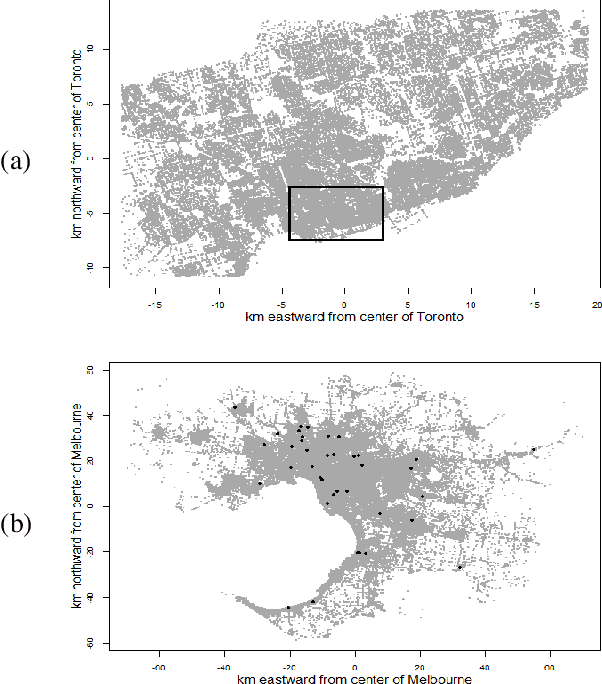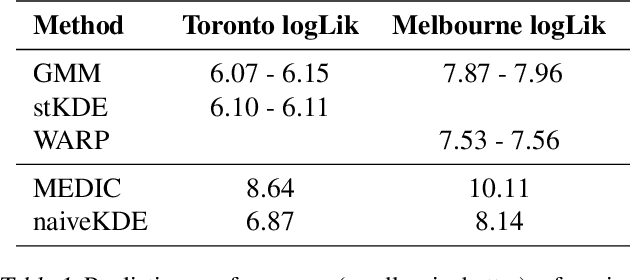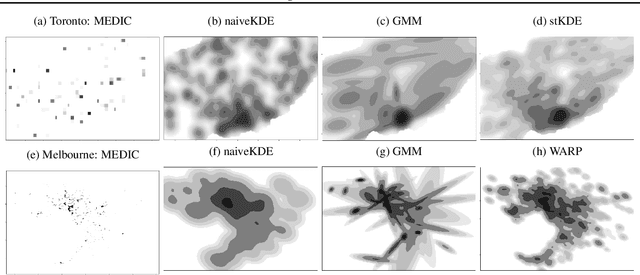Predicting Ambulance Demand: Challenges and Methods
Paper and Code
Jun 16, 2016


Predicting ambulance demand accurately at a fine resolution in time and space (e.g., every hour and 1 km$^2$) is critical for staff / fleet management and dynamic deployment. There are several challenges: though the dataset is typically large-scale, demand per time period and locality is almost always zero. The demand arises from complex urban geography and exhibits complex spatio-temporal patterns, both of which need to captured and exploited. To address these challenges, we propose three methods based on Gaussian mixture models, kernel density estimation, and kernel warping. These methods provide spatio-temporal predictions for Toronto and Melbourne that are significantly more accurate than the current industry practice.
* presented at 2016 ICML Workshop on #Data4Good: Machine Learning in
Social Good Applications, New York, NY
 Add to Chrome
Add to Chrome Add to Firefox
Add to Firefox Add to Edge
Add to Edge